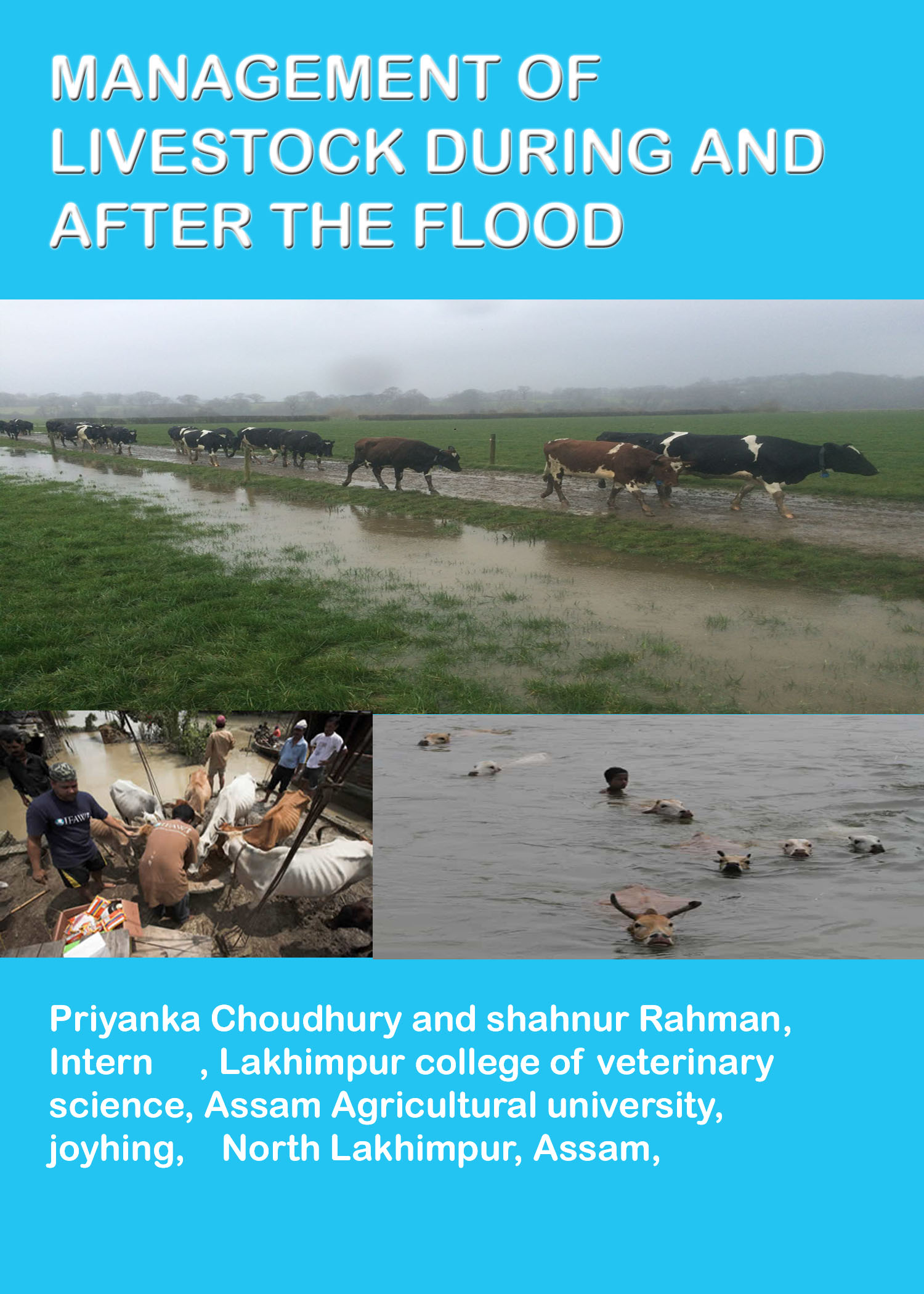Assessing And Mitigating Flood Risks For Livestock

Table of Contents
Identifying Flood Risk Factors on Your Farm
Understanding your farm's vulnerability to flooding is the first step towards effective mitigation. This involves analyzing various factors that contribute to flood risk on your property.
Geographic Location and Historical Flood Data
Your farm's location significantly impacts its flood risk. Analyzing historical data provides crucial insights into potential threats.
- Utilize online resources: Websites like the Federal Emergency Management Agency (FEMA) in the US, or equivalent agencies in other countries, offer flood maps and historical flood data. These resources allow you to pinpoint areas prone to flooding and understand the frequency and severity of past events. Searching for "[your country] flood maps" will help you find relevant resources.
- Consider proximity to waterways: Farms located near rivers, streams, lakes, or low-lying areas are at a higher risk of flooding. Assess the distance from these water bodies and the potential for overflow during periods of heavy rainfall.
- Analyze historical flood records: Contact your local agricultural extension office or government agencies for access to historical flood data specific to your region. This information will provide valuable context for assessing your farm's risk profile.
Soil Type and Drainage
The type of soil on your farm significantly influences its susceptibility to flooding.
- Soil permeability: Understanding your soil's ability to absorb water is essential. Poorly drained soils, such as clay soils, increase the risk of waterlogging and flooding. Consider conducting a soil test to determine its permeability and drainage capacity.
- Water runoff: Analyze the topography of your land to identify areas where water accumulates. Slopes, depressions, and areas with poor drainage are more likely to experience flooding.
- Improve drainage: Consider implementing drainage improvements, such as installing drainage ditches, culverts, or subsurface drainage systems, to enhance water runoff and reduce the risk of waterlogging.
Farm Infrastructure and Layout
The location and design of your farm infrastructure can exacerbate or mitigate flood risks.
- Building elevation: Evaluate the elevation of your barns, sheds, and other critical structures. Structures located in low-lying areas are at greater risk of flooding.
- Facility placement: Assess the location of water tanks, feed storage, and other essential facilities. Ensure they are positioned to minimize the risk of damage during a flood.
- Vulnerable areas: Identify low-lying pastures or areas with poor drainage that are particularly vulnerable to flooding. Consider relocating animals or implementing protective measures in these high-risk areas.
Implementing Flood Mitigation Strategies
Once you’ve identified your farm’s vulnerabilities, you can implement various mitigation strategies to reduce the risk and impact of flooding.
Pre-Flood Planning and Preparation
Proactive planning is crucial for minimizing the impact of a flood event.
- Develop an emergency plan: Create a detailed emergency plan that includes procedures for evacuating your livestock, identifying safe evacuation routes, and designating temporary shelters. Regularly practice your plan to ensure everyone is familiar with the procedures.
- Stockpile essential supplies: Maintain a supply of essential feed, water, medications, and emergency equipment (e.g., generators, pumps) to support your animals and staff during and after a flood.
- Communicate effectively: Establish contact information for emergency services, veterinarians, neighbors, and other key stakeholders.
Physical Flood Protection Measures
Implementing physical measures can significantly reduce the impact of flooding.
- Construct barriers: Build berms, levees, or flood walls to divert floodwaters away from your buildings and livestock.
- Improve drainage: Enhance your farm's drainage system to improve water runoff. This may involve installing drainage ditches, culverts, or other water management infrastructure.
- Elevate structures: Elevate critical structures like barns and feed storage areas to minimize the risk of flooding.
- Relocate facilities: Consider relocating vulnerable facilities, such as pastures or equipment storage areas, to higher ground.
Insurance and Financial Planning
Protecting your financial investment is a vital aspect of flood mitigation.
- Livestock insurance: Secure adequate livestock insurance to cover losses resulting from floods. Ensure your policy covers mortality, veterinary expenses, and other potential losses.
- Government assistance: Explore government assistance programs for flood mitigation and recovery. These programs may offer financial assistance for implementing flood control measures or recovering from flood damage.
- Financial planning: Develop a financial plan that accounts for potential expenses related to flood damage, including repairs, replacement of equipment, and loss of income.
Post-Flood Recovery and Animal Care
Swift and effective action after a flood is critical for minimizing losses and ensuring animal welfare.
Assessing Damage and Animal Welfare
Immediately after the flood, prioritize the safety and well-being of your livestock.
- Animal health check: Assess the condition of your livestock. Provide veterinary care to injured or distressed animals.
- Clean water and feed: Ensure access to clean water and adequate feed. Contaminated feed and water sources can lead to disease outbreaks.
- Disease prevention: Clean and disinfect affected areas to prevent disease outbreaks.
Cleaning and Disinfecting
Thorough cleaning and disinfection are essential for preventing disease outbreaks.
- Remove debris: Remove all contaminated feed, bedding, and debris from barns and pastures.
- Disinfect surfaces: Thoroughly clean and disinfect all surfaces using appropriate disinfectants.
- Professional help: Consider hiring professional cleaning and disinfection services for large-scale operations.
- Waste disposal: Dispose of contaminated materials properly according to local regulations.
Long-Term Recovery and Prevention
Lessons learned from a flood event should inform future preparedness.
- Review your plan: Review and update your flood mitigation plan based on the experience.
- Implement improvements: Implement additional flood control measures to further reduce your farm's vulnerability.
- Regular maintenance: Maintain your drainage systems and other flood control infrastructure to ensure their effectiveness.
Conclusion
Proactively assessing and mitigating flood risks for livestock is vital for the well-being of your animals and the long-term success of your operation. By implementing the strategies outlined in this article, you can significantly reduce the impact of flooding and safeguard your farm's future. Regularly review and update your flood risk assessment and mitigation plan. Take the necessary steps today to protect your livestock from the devastating effects of flooding, ensuring the health and prosperity of your livestock operation. Remember, effective flood risk assessment for livestock is an ongoing process, requiring vigilance and adaptation. Don’t wait for a flood to strike; start protecting your livestock today!

Featured Posts
-
 Cleveland Cavaliers Vs Indiana Pacers Game Prediction And Best Betting Odds
May 07, 2025
Cleveland Cavaliers Vs Indiana Pacers Game Prediction And Best Betting Odds
May 07, 2025 -
 Le Conclave Au Vatican Histoire Regles Et Procedure
May 07, 2025
Le Conclave Au Vatican Histoire Regles Et Procedure
May 07, 2025 -
 Accelerating Ldc Graduation A Comprehensive Guide For Achieving Ca
May 07, 2025
Accelerating Ldc Graduation A Comprehensive Guide For Achieving Ca
May 07, 2025 -
 Check The Winning Lotto Numbers For April 16 2025 Wednesday
May 07, 2025
Check The Winning Lotto Numbers For April 16 2025 Wednesday
May 07, 2025 -
 Can The Steelers Find George Pickens Replacement At The Nfl Combine
May 07, 2025
Can The Steelers Find George Pickens Replacement At The Nfl Combine
May 07, 2025
Latest Posts
-
 Xrp To 5 In 2025 A Critical Examination Of The Forecast
May 08, 2025
Xrp To 5 In 2025 A Critical Examination Of The Forecast
May 08, 2025 -
 Xrp Price Jumps Did Presidents Trump Article Boost Ripple
May 08, 2025
Xrp Price Jumps Did Presidents Trump Article Boost Ripple
May 08, 2025 -
 Xrp Price Prediction 2025 Can Xrp Hit 5
May 08, 2025
Xrp Price Prediction 2025 Can Xrp Hit 5
May 08, 2025 -
 Xrp Etfs Potential For 800 M In Week 1 Inflows Upon Approval
May 08, 2025
Xrp Etfs Potential For 800 M In Week 1 Inflows Upon Approval
May 08, 2025 -
 A Good Boy Indeed Kryptos Appearance In New Superman Footage
May 08, 2025
A Good Boy Indeed Kryptos Appearance In New Superman Footage
May 08, 2025
